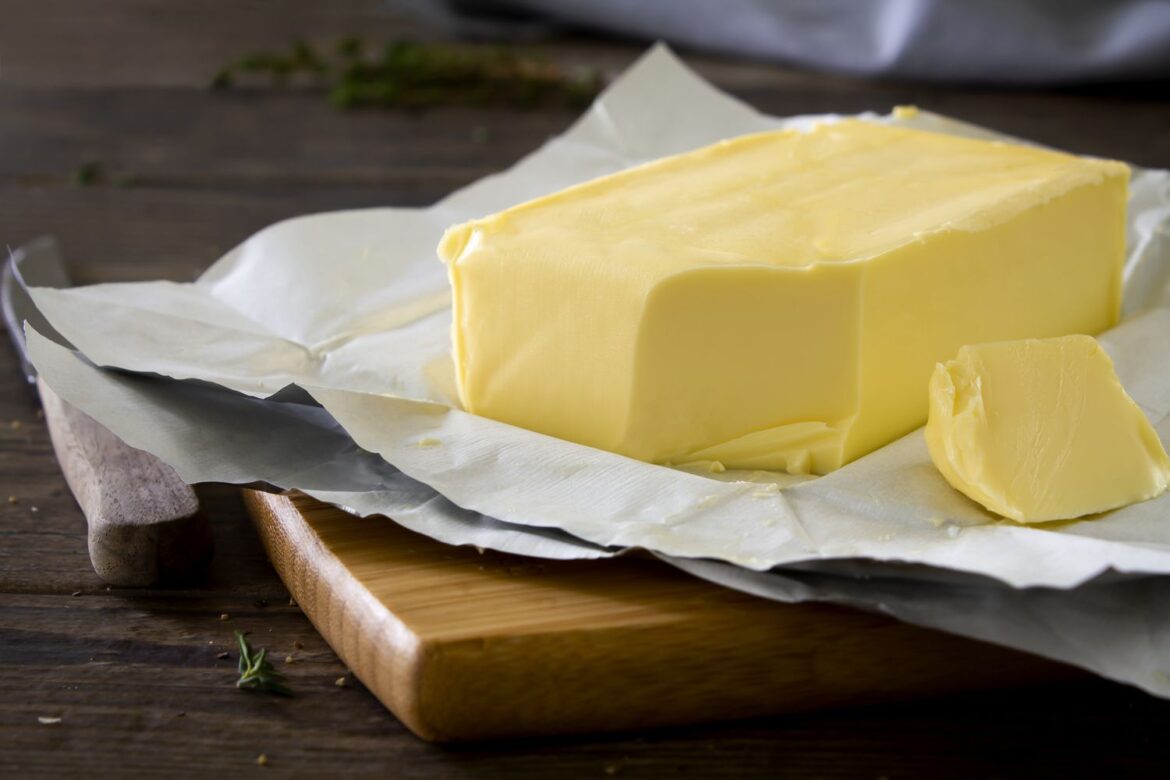The mere mention of European butter sends our imaginations into overdrive, conjuring up images of pâte brisée, the French dough that puts apple pies and quiches over the top, and puff pastry delights, like cheese straws and Napoleons. What sets this iconic ingredient apart from the quotidian tub or stick in your fridge—and can it really go one better than American butter?
Then there is European-style butter and European cultured butter—where do they fit in? We turned to culinary professionals to find out how these different types of butter stack up and the best uses for each.
What Is European Butter?
European butter refers to butter made in Europe—French butter and Irish butter are types of European butter—and it also denotes a specific butter-making method. European-style butter is produced in the same way as European butter, but it can be made anywhere.
European Butter vs. American Butter
Whatever its provenance, butter is typically creamy and delicious, with 1001 uses, but European (and European-style) butter edges out American table varieties in a few ways—and it’s also more of a splurge.
More butterfat: “European butter is made with a higher percentage of butterfat than the 80 percent in American butter, which makes the butter taste richer,” explains Michelle Palazzo, chef spokesperson for Plugrà, a brand known for its premium European-style butter, and director of pastry operations for the Frenchette Group in NYC. Plugrà’s butter, by comparison, is standardized at 82 percent butterfat, which is the French standard.
Butter defined: To be called butter, the European Union requires that products contain from 82 to 90 percent butterfat. To be labeled butter in this country, the USDA sets the bar at a minimum of 80 percent butterfat.
Slow churn: The churning process also plays a significant role; European butter is slow-churned, yielding greater fat content and less moisture. “That combination provides the most delicious butter flavor and texture,” Palazzo says.
Cultured: Butter is usually made from pasteurized cream. Traditionally, European butter is also cultured, Palazzo says. Similar to yogurt, live bacterial cultures are added to the cream, and once it ferments and thickens, the butter is churned, resulting in a distinctive, somewhat sour taste and rich consistency.
“It has a slight tang and smooth texture, so it’s fantastic for items where butter is the main ingredient, like buttercream, or butter-rich cakes,” says Eric Wolitzky, executive pastry chef of Fifth Group Restaurants in Atlanta. “American butter has a higher water content and a milder flavor since it is not cultured.” It also tastes sweeter.
Baking With European Butter
Culinary experts, particularly pastry chefs, tout the creaminess and scrumptious results of European butter. “It’s absolutely better for baking,” confirms Wolitzky. Palazzo agrees wholeheartedly: “In all my professional and home baking, I always look to use a European or European-style butter, especially when making any sort of pie or pastry dough, because it has a higher percentage of butterfat.” Unsalted varieties are preferred since they don’t impact the salt quotient of creations.
Butter creates steam during baking, which lifts the dough and forms ethereal layers with a balanced texture. The higher butterfat, Wolitzky says, bumps up the flakiness and tenderness in baked goods.
“It’s awesome in pastries that rely on those qualities, like croissants, Danish, pie dough, and sable cookies,” he says.
Cooking With European Butter
European butter also takes the cake in savory scenarios. “As far as cooking, the same ideas apply: Use European butter in dishes where you really want the butter to shine,” says Wolitzky.
Sauces: European butter gives sauces a creamier texture, Palazzo notes. It can also be the final flourish, rendering sauces transcendent. Wolitzky suggests using it to finish a sauce where the butterfat gives you a better emulsion and balances the richness. Try it in our Beurre Blanc or our Herbed White Wine Lemon Sauce.
Pan-seared dishes: It can be your secret weapon in sautéed or pan-seared creations, too, Palazzo says. When used for pan searing, for instance, it lends a better browning, Wolitzky notes. Experiment with our Sautéed Pork and Plums and our Pan-Seared Steak.
Bread and Butter
A slice of freshly baked bread is one of the best vehicles for sampling tangy European butter. It also makes a beautiful base for flavored butters, Palazzo says. These compound butter spreads can feature spices, herbs, or seeds, or swing sweet, with mashed berries or cinnamon and sugar.
Where American Butter Shines
For all European butter’s merits, there may be times when a stick of American butter does the trick. “It’s best in baked goods where you may be adding a lot of additional flavors,” Wolitzky says. Think chocolate chip cookies, fudgy brownies, pecan pie filling, a chocolate frosting, or gingerbread.” The butter’s water content gives these cookies extra spread and also lends moisture to the cakes, he explains.
Storing European Butter
Well-wrapped butter will go the long haul, lasting anywhere from one to four months in the fridge. Wolitzky maintains that European butter stores like a dream and has a better shelf life.
Freezing butter: Its lower water quotient also means fewer ice crystals when frozen. “When you are using a lot of it like I do, it cuts so beautifully since it has a better structure. American butters just crumble and flake, which is painful for pastry chefs,” Wolitzky says.


Dining and Cooking